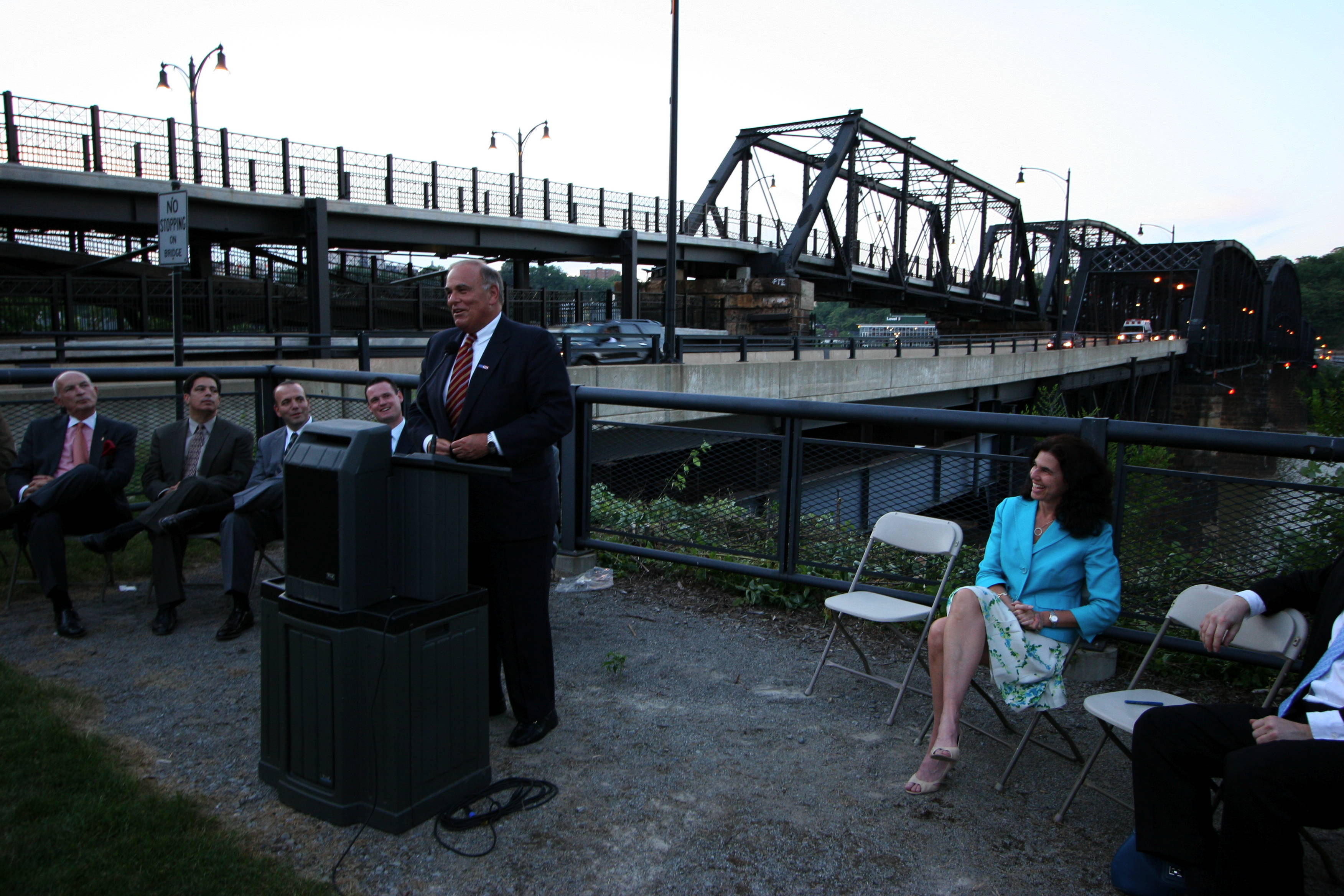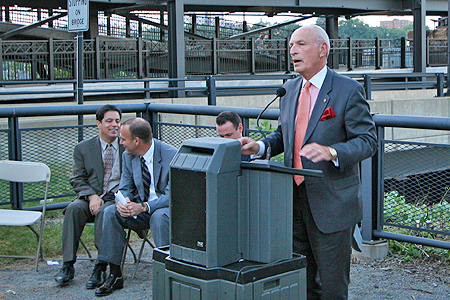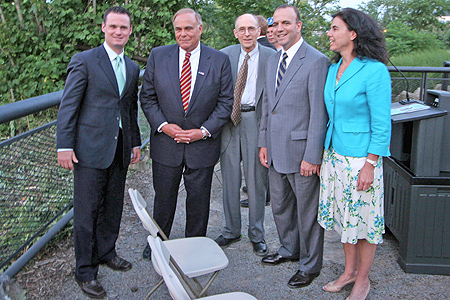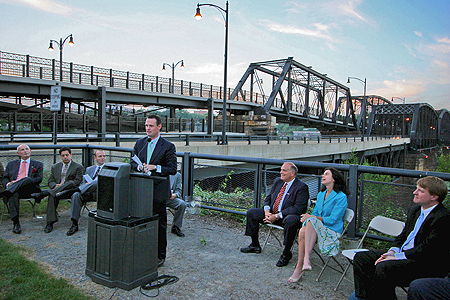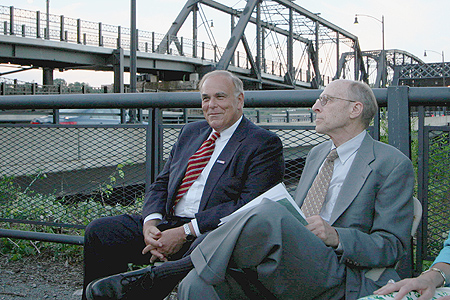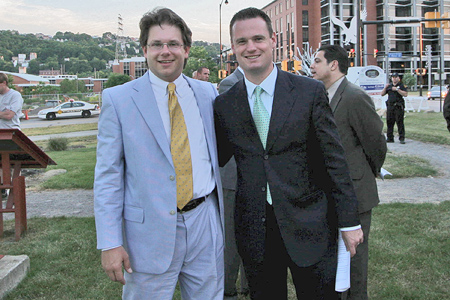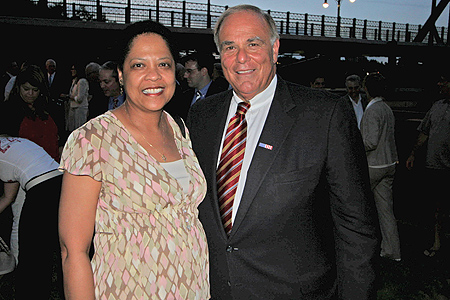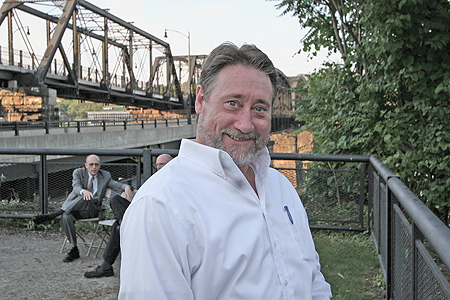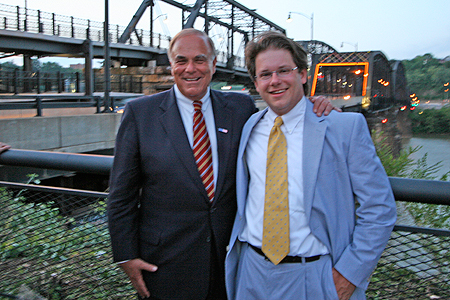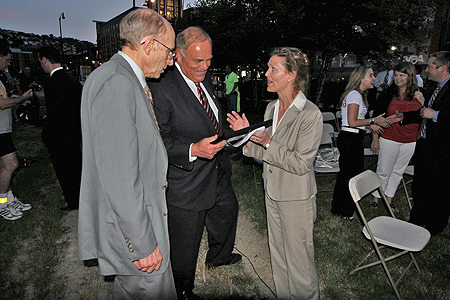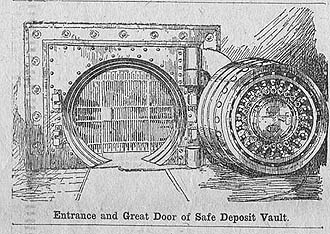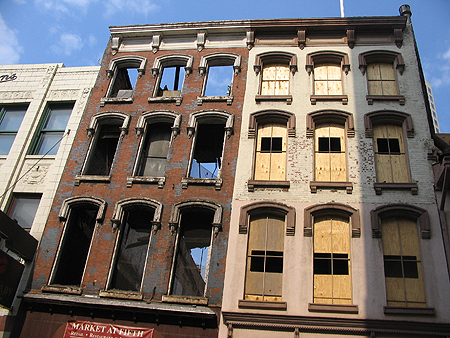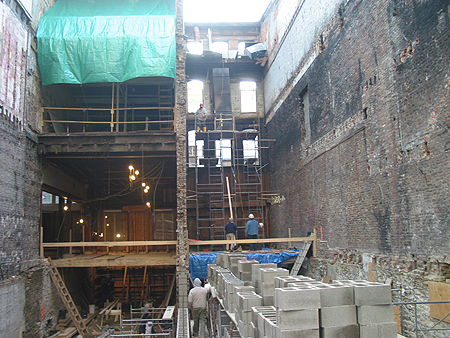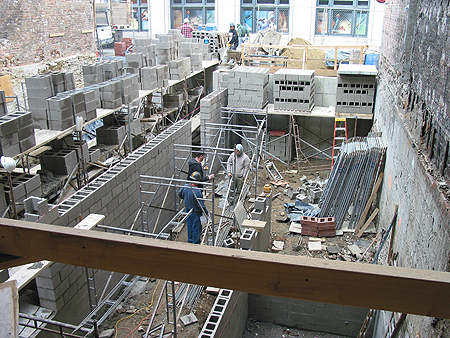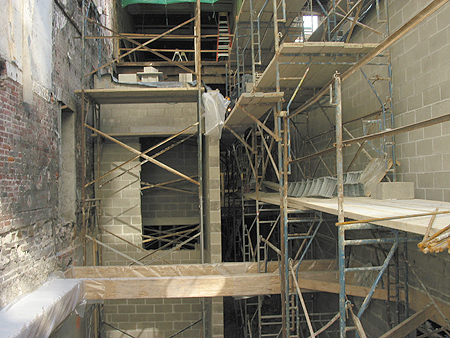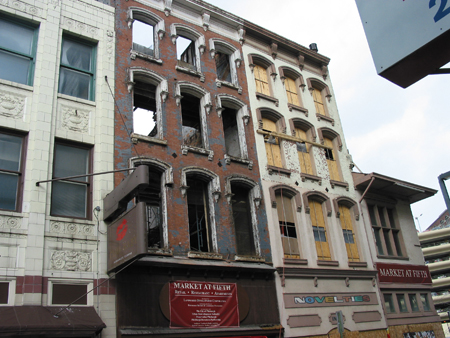
Category Archive: Downtown Development
-
Point Park University Alumnus Howard B. Slaughter Jr. – Catalyst for Community Growth and Development
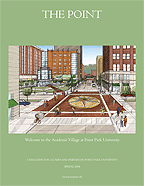 by Colleen C. Derda
by Colleen C. Derda
The Point Magazine, Spring 2008
Point Park UniversityHoward B. Slaughter Jr., D.Sc. (MBA ’01), is enjoying his latest riverfront views. From the offices of Landmarks Community Capital Corp. in Station Square, he can see down the Monongahela River toward Point State Park.
“This office has a great view of Pittsburgh architecture,” says Dr. Slaughter, a man who appreciates old buildings and knows what it takes to restore them. His extensive financing background focuses on economic development and housing developments in urban areas.
Slaughter heads the new Landmarks Community Capital Corp., a wholly owned subsidiary of the Pittsburgh History & Landmarks Foundation, which provides equity, debt and short-and intermediate-term financing for housing and economic development activities throughout Western
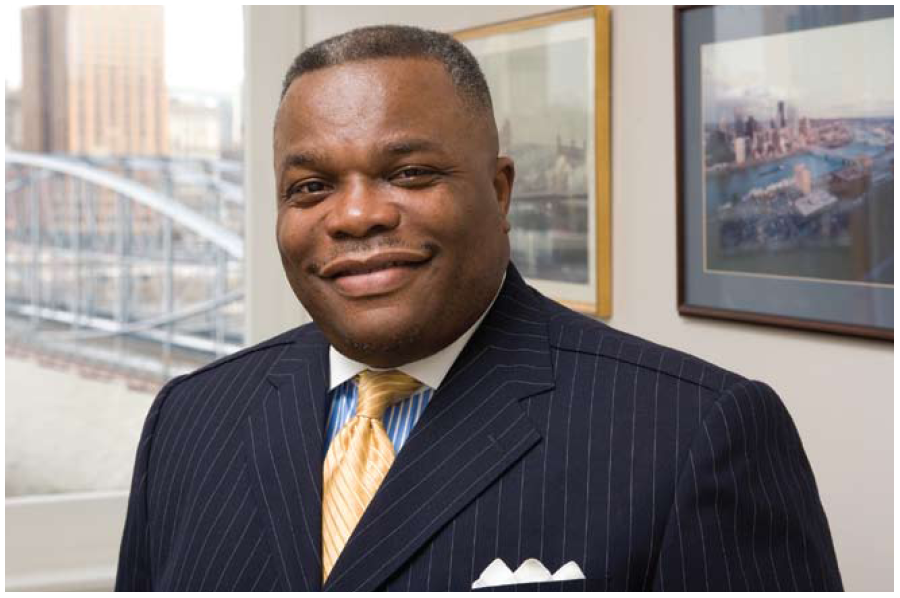
Pennsylvania, West Virginia and Ohio. The nonprofit corporation also aims to pursue public policy initiatives and public-private partnerships as well as utilize such tools as new market tax credits to bring additional capital into the region.
“We have the opportunity to be a catalyst for change,” he says. “Typically we are ‘first in and first out,’ often taking the greatest financial risk, to help move developments forward. We require collateral, but we are a non-traditional lender, with the flexibility to help make revitalization a reality.”
Landmarks Community Capital Corp. recently approved a $885,000 loan leveraging a $7-million revitalization condo development in East Liberty. Working through East Liberty Development Inc., the funding will help transform a former YMCA into condominiums and retail space. Landmarks Community Capital Corp. is also working to attract a supermarket to Pittsburgh’s Hill District, among other unique development projects.
“We have an experienced staff, reflecting ethnic diversity, which helps us to be as effective as possible and to effectuate positive change,” stresses the chief executive officer. “Not only urban neighborhoods, but rural communities can benefit from the corporation’s funding. We work within a 250-mile radius of Pittsburgh.”
Slaughter’s approach to community lending integrates historic preservation as a stimulus for economic development. He previously served as director of preservation services at the Pittsburgh History & Landmarks Foundation before being appointed director of Fannie Mae’s Pittsburgh Community Business Center, the largest source of home financing in the country. His background also includes a stint as a vice president of community development at Dollar Bank, where he led the bank to its first “Outstanding” Community Reinvestment Act rating.
Slaughter was recently appointed treasurer of the Urban League of Greater Pittsburgh and renominated by Gov. Ed Rendell (and unanimously confirmed by the Pennsylvania State Senate) to the Board of the Pennsylvania Housing Finance Agency board. He also serves on the board of the Pennsylvania Community Development Bank. His extensive educational background, which includes five degrees, includes a master of business administration from Point Park.
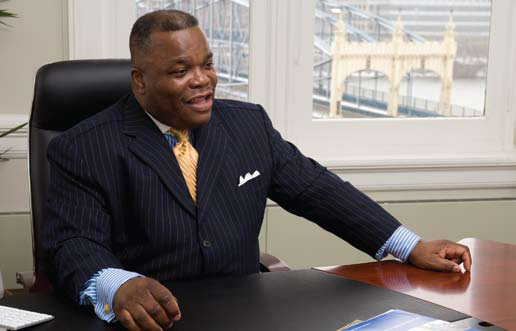
“I am pleased to have had the opportunity to take advantage of what Point Park offered.
I attended the master’s degree program all day every Saturday for an entire year. It was a commitment, but it enhanced my educational goals and fit my needs well,” says Slaughter, who also holds a master’s degree from Carnegie Mellon University’s H. John Heinz III School of Public Policy and Management and a doctorate in information systems and communication from Robert Morris University.
Slaughter can see a bit of Point Park University from his Station Square office. “I’ve been watching Point Park transform,” he says. “The changes are exciting and a real benefit to the urban core of this region.”
-
Hot Metal Bridge Lighted
PHLF News
June 13, 2008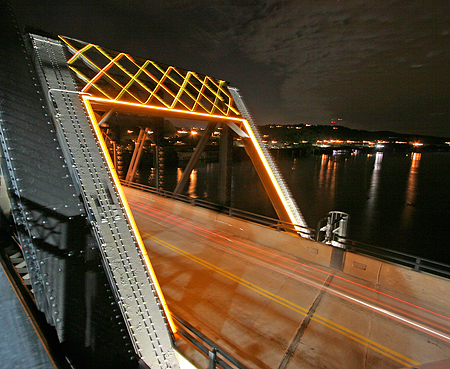
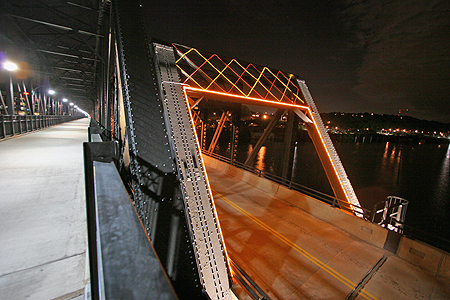
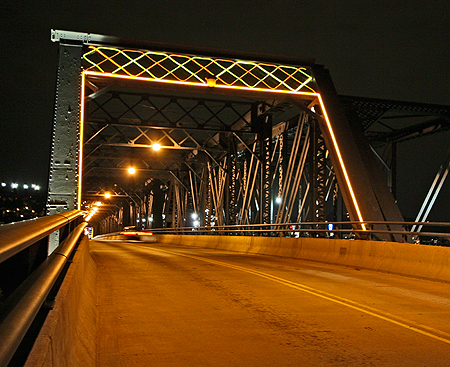
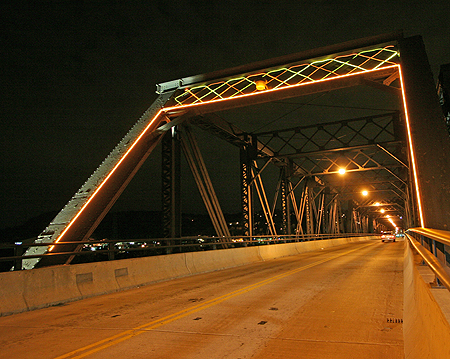
Governor Edward G. Rendell, accompanied by Mayor Luke Ravenstahl, activated the lighting of the portals of the Hot Metal Bridge, as it is commonly called today, at 8:15 p.m., Thursday, June 12, 2008.
The ceremony took place at the Steelworkers’ Monument on the South Bank of the Monongahela River. This was the third bridge decoratively lighted under the auspices of Pittsburgh History & Landmarks Foundation (Landmarks). The first was the Smithfield Street Bridge and the second was the Roberto Clemente Bridge.
Actually, the portal lighting decorates the Main Bridge (Monongahela Connecting Railroad Bridge), constructed in 1904 and opened to motor vehicles in 2000. The Hot Metal Bridge of 1900 (opened to bicycles and pedestrians in 2007) replaced the original Hot Metal Bridge of 1887. With the opening of Hot Metal Street in South Side Works, the name “Hot Metal Bridge” is now commonly used to refer to the historic bridge pair that is built on a shared set of piers.
Historically, hot metal––iron just smelted in a blast furnace and still close to 3,000 degrees Fahrenheit—was transported in ladle cars from the blast furnaces on the north shore of Jones & Laughlin’s Pittsburgh Works across the Hot Metal Bridge of 1900 to the Bessemer converters and open-hearth furnaces of the South Side Plant. The Main Bridge of 1904 served the general purposes of the Monongahela Connecting Railroad, including the transportation of steel ingots and slabs.
The bridge lighting is LED tubular lighting in orange, red, and yellow, suggesting the colors of the hot metal and steel slabs that were once transported across the bridges.
Grenald Waldron Associates of Philadelphia designed the lighting for the bridge as they did for the Roberto Clemente Bridge. Courtney Sarge was the principal designer.
The Governor said, “Grenald has done excellent work once again, we are delighted to see Landmarks utilizing Pennsylvania designers and Pittsburgh contractors for the work that they do with bridge lighting.”
Funding for the project came primarily from a grant from the Department of Community and Economic Development at the Governor’s request. That grant totaled $125,000. Design of the lighting was financed by grants from the Soffer Corporation, the International Brotherhood of Electrical Workers, Wellington Power, and Landmarks totaling $12,500. Landmarks also underwrote an additional $15,000 of costs for the project, bringing the total to approximately $150,000.
Mayor Ravenstahl pointed out, “This is another fine public-private accomplishment in our goal to make Pittsburgh a uniquely attractive city by capitalizing on our historic assets. We thank the Governor and Landmarks and our city team for bringing about this excellent result.
Mark Bibro, Chair of Landmarks, said, “We are grateful that we have a governor who understands the significance of lighting these great engineering monuments to promote their continued use and increase tourism. We are the ‘City of Bridges,’ with 446 bridges (based on the most recent count) within the City limits, and hundreds more throughout Allegheny County. We must continue this lighting program.
Founded in 1964, the Pittsburgh History & Landmarks Foundation works to identify and save architectural landmarks; revitalize historic neighborhoods; and instill community pride. Visit www.phlf.org or call 412-471-5808 for information about preservation services, educational programs, and membership benefits.
# # #
-
Rescue plan for Downtown’s Market Square is expanding
By Ron DaParma
TRIBUNE-REVIEW
Monday, April 28, 2008The Pittsburgh History & Landmarks Foundation is tackling another building rescue project in Market Square, with the aim to further a transformation already under way in the historic Downtown public square.The South Side preservationist organization announced today it will take on restoration of the Thompson Building, a three-story structure adjacent to a trio of vacant buildings where it is spending about $2.5 million to convert into a mixed use complex known as Market at Fifth.Acquisition of the building will enable the foundation to expand its complex into that structure.
Plans for 439 Market St., 441 Market St., and 130 Fifth Ave. include a ground-level restaurant or retail store, seven upper-floor apartments and a rooftop garden.
In addition, the foundation also announced it was given an “easement in perpetuity that will protect the architectural quality of the Buhl Building, another structure on Fifth Avenue near Market Square.As reported, eight new shops have moved in — or will in the coming months — further rejuvenating the 224-year-old square.
Businesses there have credited an increased police presence to fight crime, reduce panhandling and efforts to clean up the city’s streets.
More recently, new programs have been introduced, such as the Pittsburgh Downtown Partnership’s Paris to Pittsburgh program that is providing matching grants to help restaurants and other merchants renovate their buildings and expand their operations onto sidewalks — similar to venues popular with tourists in the French capital.
Ron DaParma can be reached atrdaparma@tribweb.com or 412-320-7907.
-
Preservation group takes control of Market Square block
By Diana Nelson Jones,Pittsburgh Post-GazetteMonday, April 28, 2008The Pittsburgh History & Landmarks Foundation has joined forces with N&P Properties to control the development of almost a block of buildings on Market Street, between Fifth Avenue and Market Square, Downtown.
Two five-story buildings in that block are now shells in the process of renovation into seven apartments, and a third will join the other two as retail space on the sidewalk level.
The foundation last week bought the Thompson Bakery building, which now houses the restaurant Ciao Baby, and N&P bought the Buhl Building at the entrance to Market Street at Fifth Avenue and gave the foundation an easement in perpetuity to protect the architectural integrity and terra-cotta facade.
-
Hill to have say on Save-A-Lot
By Ron DaParma
TRIBUNE-REVIEW
Wednesday, April 9, 2008A community meeting Saturday could be a “make or break” moment for the effort to bring a Save-A-Lot grocery store to the Hill District.The 10:30 a.m. session at the New Light Temple Baptist Church on Centre Avenue could help determine if supporters of the plan can sway opponents, said Howard Slaughter, CEO of Landmarks Community Capital Corp.“We will see if the community is really interested in having Save-A-Lot come to the Hill District,” said Slaughter, who is helping to organize the meeting.
Landmarks Community Capital is a nonprofit corporation formed last year by the Pittsburgh History & Landmarks Foundation to spark community revitalization.
The main sponsor is Councilwoman Tonya Payne, whose district includes the Hill District.
For years, there has been widespread support for a Hill District supermarket. Some residents, however, say they’d prefer a “full-service” store, larger and with a greater selection of products, than those generally operated by St. Louis-based Save-A-Lot.
They’ve asked about such features as an in-store bakery or pharmacy, for example.
“You have to start somewhere,” said Payne, who believes the grocery store could be a catalyst for other retailers to come into the neighborhood.
“I think we are on the verge of something good. We have somebody in Save-A-Lot that is willing to take the first plunge, and it could create opportunity for further development,” she said.
Still, she and others will leave it up to the community to decide, Payne said.
Before the meeting, an 8:30 a.m. bus tour will take residents who have signed up in advance to get a firsthand look at Save-A-Lot’s store in Wilkinsburg. That store is one of five the chain operates in the Pittsburgh area, among 1,600 stores nationwide.
At the meeting, Mark Goodman, chief operating officer of Save-A-Lot, and other speakers will address concerns of residents. Others include people from communities that have a Save-A-Lot store, including Chris Jenkins, executive director of the Black Vietnam Veterans in Wilkinsburg.
“Save-A-Lot remains very interested in locating in the Hill District, but they certainly believe community support is imperative,” Slaughter said.
Payne intends to pass out a survey for residents to state their opinions and make suggestions for Save-A-Lot to consider in its planning.
“It will be what the community wants, but based on the conversations that have taken place over the last several years, the community wants nothing less than a full-service supermarket,” said George Moses, a member of the Hill District Consensus Group.
Moses said Save-A-Lot’s discount pricing is not enough to offset his concerns about its product selection and no-frills approach to service, including having customers bag their own groceries.
Instead, he’d like to see public officials press full-service grocers such as Giant Eagle or Shop ‘n Save to consider a Hill District store.
Giant Eagle believes its stores in nearby neighborhoods such as the North Side, South Side and Shadyside already serve Hill District customers, said Dick Roberts, a spokesman.
Ron DaParma can be reached atrdaparma@tribweb.com or 412-320-7907.
-
Door to History: New owners of old Union Trust Building hope to find use for bank vault
Wednesday, March 12, 2008
By Sally Kalson, Pittsburgh Post-GazetteWhen the Union Trust Building opened Downtown in 1923, its safe deposit vault in the basement was reported to be the largest and strongest in the world — 80 feet long, 45 feet wide, 8 2/3 feet high, with walls 20 inches thick.
Now, 85 years and several bank mergers and sales later, the vault is still an impressive, if musty, catacomb that harkens back to another era. With its rows of burnished bronze cubbies, clanking gates and massive circular 55-ton door, it could easily be imagined as the set of an old bank heist movie starring James Cagney or Edward G. Robinson.
There’s almost nothing left there to steal now. Citizens Bank, which took over the vault from Mellon Bank after buying the latter’s consumer and small business operation in 2001, began notifying depositors several months ago to empty their lock boxes because it was vacating the premises.
Only about 1,800 of 12,000 boxes were in use at that point. Most have been cleared out by their owners, although some unclaimed boxes remain. On March 21, the vault will officially close; any leftovers will be drilled and moved to the Citizens branch across the street for safekeeping while the bank looks for their owners.
Citizens Bank president Ralph Papa, who was with Mellon for many years before the sale, said there was no need to keep the Union Trust vault in operation.
“We have more than 90 branches around the area, and the vast majority have safe deposit boxes,” he said. “There are lots of places for people to move the contents.”
Still, the closing of the storied vault sounds like the end of an era. But the Union Trust Building’s new owners say they are well aware of the basement’s historic nature.
“We’re looking at a number of uses,” said Rick Barreca, CEO of the Mika Realty Group of Los Angeles, which last month paid $24.1 million for the 11-story property.
“Our hope is that we can work with another financial institution in the future that might make use of the vault,” Mr. Barreca said. “It’s really a work of art, a unique facility that I think is irreplaceable. We have a large commitment to the building, and the vault is one of the benefits of owning it.” …..
That’s a sensible attitude, because it’s hard to see how the structure could be removed without tremendous cost and disruption. Mika is considering excavating under the building for a parking garage, but Mr. Barreca said “there’s plenty of room for that without touching the vault.”
Sparse history
Much has been written about the Union Trust Building from the ground up. The edifice is considered by many to be Downtown’s most spectacular, with its ornate Flemish Gothic exterior, 10-story rotunda, circular skylight and the twin “chapels” on the roof that actually house elevator machinery. It takes up the entire city block bounded by Fifth and Oliver avenues, Grant Street and William Penn Place. The design is credited to F.J. Osterling, but was probably conceptualized by Pierre A. Liesch, who worked for Osterling briefly, according to the late historian James D. Van Trump. In 1973, the building was recognized as a historic landmark.
But when it comes to the underground portion, there’s very little on the historical record. However, one article from the Pittsburgh Sun newspaper, dated Nov. 21, 1932, contained a descriptive bonanza.
“Great Vault Is World’s Largest” was the Sun headline that introduced the facility to the public. The report included illustrations of the vault opening and its interior and noted that the total weight of the doors and equipment was 5 million pounds.
The report described the vaults as “great fire, burglar, flood and mob proof strongholds,” built of “a double tier of interlocked heavy steel beams, surrounded by and imbedded in solid concrete, lined with the hardest and toughest armor plate.
“Every inch is guarded by electric alarms, and every protective device developed by human genius and skill has been installed to make absolutely safe the possessions deposited in it.
“The material is finished in solid bronze, and the boxes are 26 inches deep and are made of open hearth steel, the doors being one-half inch thick. The portable boxes are aluminum and were made by the Aluminum Company of America.”
The article went on to recommend the “impregnable trunk vault” as the ideal repository for silverware, heirlooms, valuable books and other bulky possessions.
All the more noteworthy is the fact that the vaults were retrofitted, because the building was not designed as a bank. It opened in 1917 as the Union Arcade, built by Henry Clay Frick on land he purchased from the Catholic Diocese of Pittsburgh. At the time, it claimed to be the largest arcade in the world, with 240 shops on the first four floors and 760 office suites on the upper levels.
Six years later, the Union Trust Co. took over more than two acres of floor space, put its name on the edifice and its vault under it. The retrofitting was done by Graham, Anderson, Probst & White, successor of D. H. Burnham & Co., architects of the Frick and Oliver buildings.
The newspaper described the vaults as occupying two levels — nearly 28,000 square feet on the safe deposit floor, and some 20,000 square feet on “the silver vault floor” for paintings, bullion and other heavy possessions.
That left the folks at Citizens scratching their heads, because the vault as it exists today has only one floor. “Nobody seems to know about that second floor,” said spokeswoman Angela Wagner.
The vault is changed in other ways as well. The open central area depicted in the Sun’s 1923 illustration is now crammed full of deposit boxes that were forklifted over from Mellon Bank’s Smithfield Street location after that building was sold in 1999 and made into a Lord & Taylor department store that closed five years later.
It’s hard to say for sure if the vault anteroom floor is original. The surface comes up higher than the bottom of the vault door, so the floor must be dropped by means of a long pole and lever to clear the way for swinging the enormous door open or closed. That may be depicted by the curved line in the illustration, but it’s difficult to tell.
The Union Trust Co. merged with Mellon Bank in 1946 to form Mellon National Bank & Trust Co. The building was rechristened Two Mellon Bank Center in the 1990s, but most Pittsburghers never stopped calling it the Union Trust Building.
Mellon — now Bank of New York Mellon — left the premises in 2006, and the structure is virtually empty except for Larrimor’s on the street-level corner of Grant and Fifth. Mika Realty hopes the high-end men’s clothier will remain, and CB Richard Ellis is charged with attracting new retail and office tenants.
As for the vault, it’s not going anywhere.
Sally Kalson can be reached at skalson@post-gazette.com or 412-263-1610.
First published on March 12, 2008 at 12:00 am
-
Market at Fifth Continues
PHLF News
March 7, 2008Construction is proceeding with our three buildings at the gateway to Market Square at Market and Fifth Avenues downtown.
We acquired these buildings from URA, severely deteriorated, and have dismantled much of the wall structures brick-by-brick, cleaning the bricks to return them to rebuild the walls.
Our timetable calls for completion early next winter. Seven apartments will be on the second and third floors consisting of 6 one bedrooms and 1 two bedroom, two with roof gardens.
Substantial contributions are needed to complete this work, resulting in a Platinum level Green certified historic complex.
Costs will exceed $3,500,000, but we feel the expense is worth it to preserve and restore these anchor corner properties across from the forthcoming new PNC Park, and within view of Heinz Hall, and helping to frame the entranceway to Market Square.
-
PHLF Introduces Grocer to Hill District
PHLF News
March 7, 2008For nearly a quarter a century, the residents of the Hill District have sought to attract a quality full service grocer to the Hill.
When Dr. Howard B. Slaughter, Jr. became Chief Executive Officer of Landmarks Community Capital Corporation (LCCC) a subsidiary of Pittsburgh History & Landmarks Foundation (PHLF) in October 2007, he made it a top priority to locate a suitable grocer interested in locating in the Hill District.
PHLF worked with Save-A-Lot in locating a new store in Wilkinsburg and experienced excellent cooperation with their design and graphics.
After a series of meetings to engage Save-A-Lot’s interest in the Hill District, LCCC hosted a breakfast meeting to introduce Save-A-Lot to the community and City officials.
The next step is to have a meeting in the Hill District to discuss the possibility and viability of this grocer locating in the Hill District, which is scheduled for April 12th. Stay tuned…
Save-A-Lot has provided the community two videos for viewing by clicking here.


